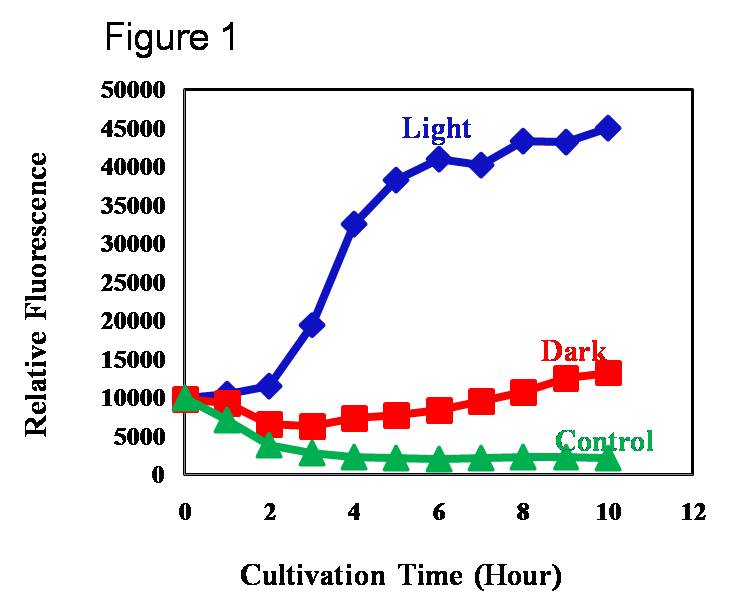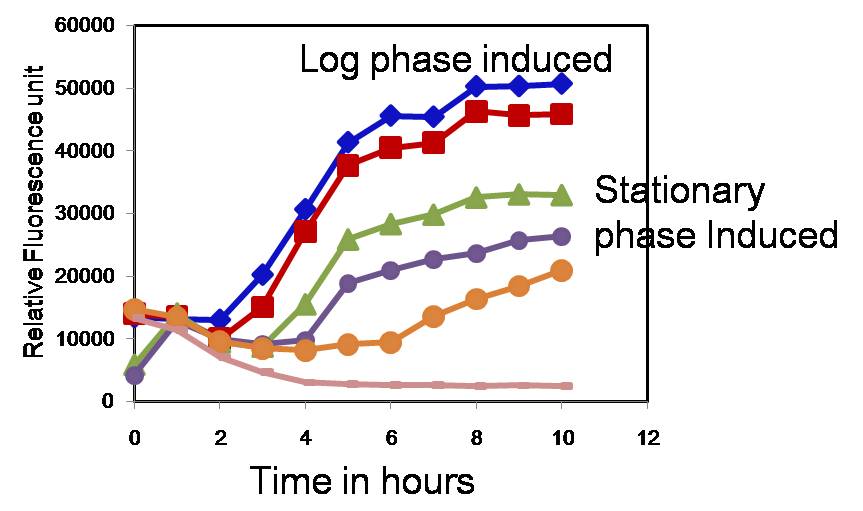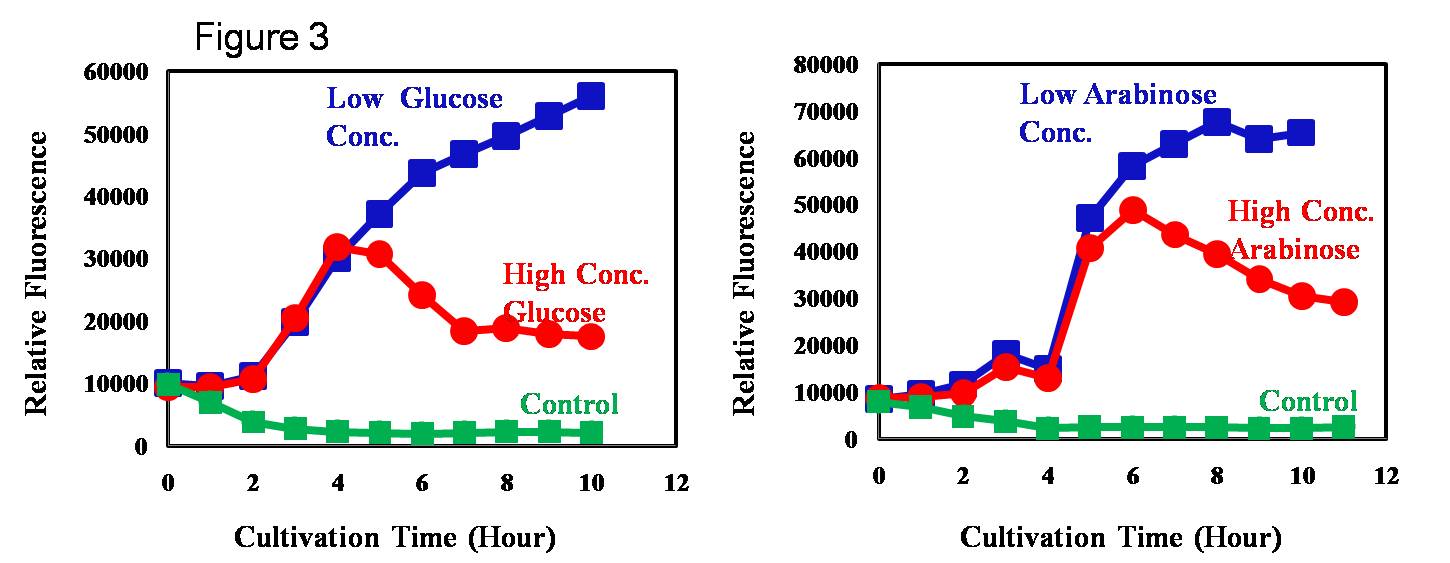Difference between revisions of "Part:BBa K592000:Experience"
(→Applications of BBa_K592000) |
(→Applications of BBa_K592000) |
||
| Line 12: | Line 12: | ||
In order to avoid the leaky expression of cI in the presence of light and enhance the expression of the target gene, we integrated the Pompc expressing cI into the chromosome of ''E. coli''. We tried to regulate the expression of target by light mediated modulation of chromosomally encoded cI (Fig 1). | In order to avoid the leaky expression of cI in the presence of light and enhance the expression of the target gene, we integrated the Pompc expressing cI into the chromosome of ''E. coli''. We tried to regulate the expression of target by light mediated modulation of chromosomally encoded cI (Fig 1). | ||
| − | [[Image:SKL9.jpg| | + | [[Image:SKL9.jpg|500px]] |
'''Effect of duration of light and age of cells on gene expression''' | '''Effect of duration of light and age of cells on gene expression''' | ||
| Line 19: | Line 19: | ||
Figure 2 | Figure 2 | ||
| − | [[Image:SKL5.jpg]] | + | [[Image:SKL5.jpg|500px]] |
'''Cross talk between Cellular function and the Light receptor''' | '''Cross talk between Cellular function and the Light receptor''' | ||
| Line 25: | Line 25: | ||
The light receptor was a hybrid of the cyanobacterial light receptor and ''E. coli'' osmo regulator. Further, the promoter regulated by light was originally regulated by osmolality i.e. higher concentration of salt/sugar would repress the promoter. We have deleted the native EnvZ gene in order to avoid the cellular cross talk. However, despite the deletion of envZ gene, promoter Pompc was regulated by osmolarity (Figure 3). This indicates the presence of a cross-talk between the native cellular function and the light receptor. | The light receptor was a hybrid of the cyanobacterial light receptor and ''E. coli'' osmo regulator. Further, the promoter regulated by light was originally regulated by osmolality i.e. higher concentration of salt/sugar would repress the promoter. We have deleted the native EnvZ gene in order to avoid the cellular cross talk. However, despite the deletion of envZ gene, promoter Pompc was regulated by osmolarity (Figure 3). This indicates the presence of a cross-talk between the native cellular function and the light receptor. | ||
| − | [[Image:SKL10.jpg]] | + | [[Image:SKL10.jpg|500px]] |
Revision as of 13:21, 3 October 2011
This experience page is provided so that any user may enter their experience using this part.
Please enter
how you used this part and how it worked out.
Applications of BBa_K592000
We, UNIST_KOREA (2011 iGEM) team obtained the plasmids encoding the hybrid light receptor, biosynthesis pathway for PCB production and Pompc expressing cI from Christ Voigt.
Characterization of Light receptor and its invertor
Orginally all light regulated promoters are represse gene expression in the presence of light. However, for our experiment we need to switch on the expression of the target gene in the presence of light. Hence, we tried to engineer an inventor such that light favors the expression of the target gene. The invetor we exploited was the famous lambda repressor, cI.
In order to avoid the leaky expression of cI in the presence of light and enhance the expression of the target gene, we integrated the Pompc expressing cI into the chromosome of E. coli. We tried to regulate the expression of target by light mediated modulation of chromosomally encoded cI (Fig 1).
Effect of duration of light and age of cells on gene expression
We also wanted to characterize the duration of light needed to induce gene expression. Our results indicate that it takes almost 1 hour for the PompC promoter to be inactivated, cI being degraded and the target gene being expressed. The 1 hour duration was irrespective of the stage in which the cells were induced i.e. even when the cells were induced in either log phase or in stationary phase it takes 1 hour for the target gene to be expressed. However, fold change in gene expression differs with the phase in which gene expression was induced (Fig 2).
Cross talk between Cellular function and the Light receptor
The light receptor was a hybrid of the cyanobacterial light receptor and E. coli osmo regulator. Further, the promoter regulated by light was originally regulated by osmolality i.e. higher concentration of salt/sugar would repress the promoter. We have deleted the native EnvZ gene in order to avoid the cellular cross talk. However, despite the deletion of envZ gene, promoter Pompc was regulated by osmolarity (Figure 3). This indicates the presence of a cross-talk between the native cellular function and the light receptor.
Disadvantage
The crosstalk observed in the light receptor would be a disadvantageous feature in case light mediated gene expression systems are to be used in industrial process were the osmolarity effects will be high.
User Reviews
UNIQ88462411fc140c2c-partinfo-00000000-QINU UNIQ88462411fc140c2c-partinfo-00000001-QINU



